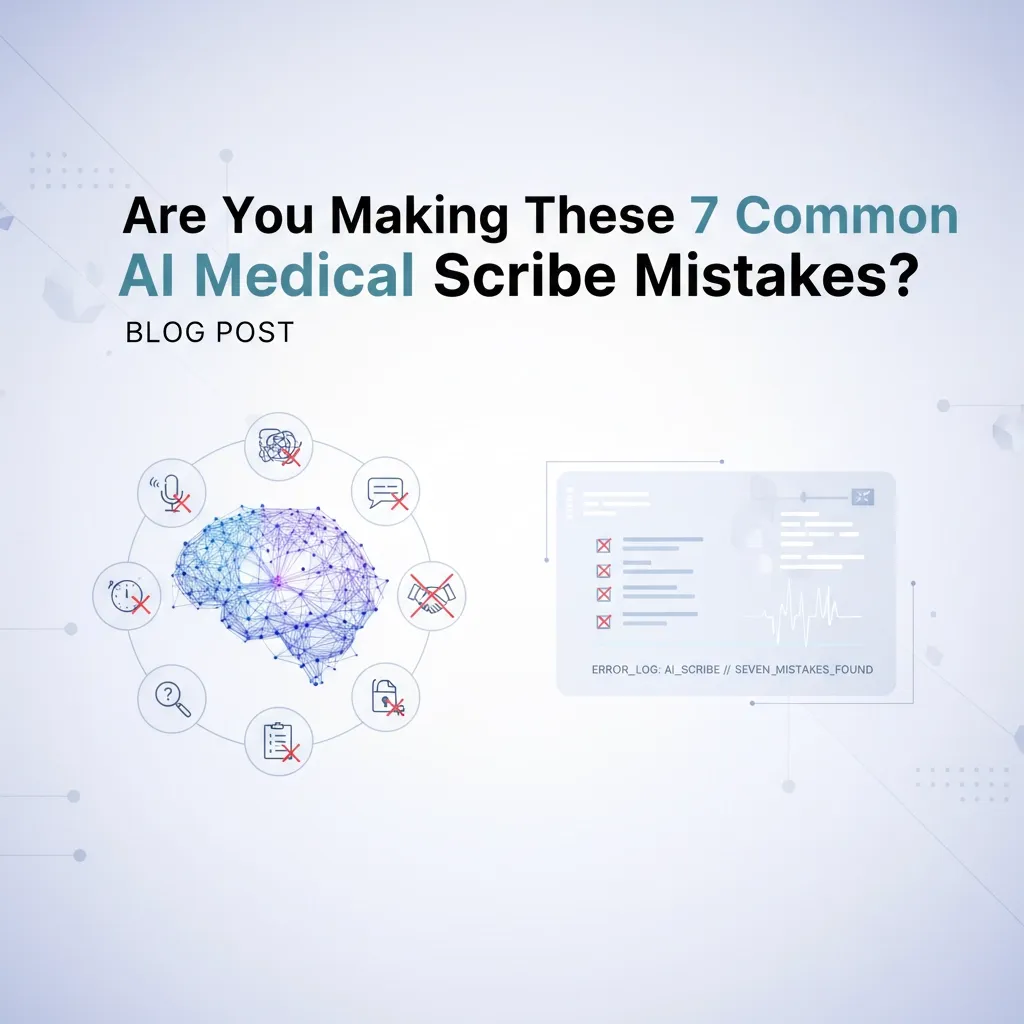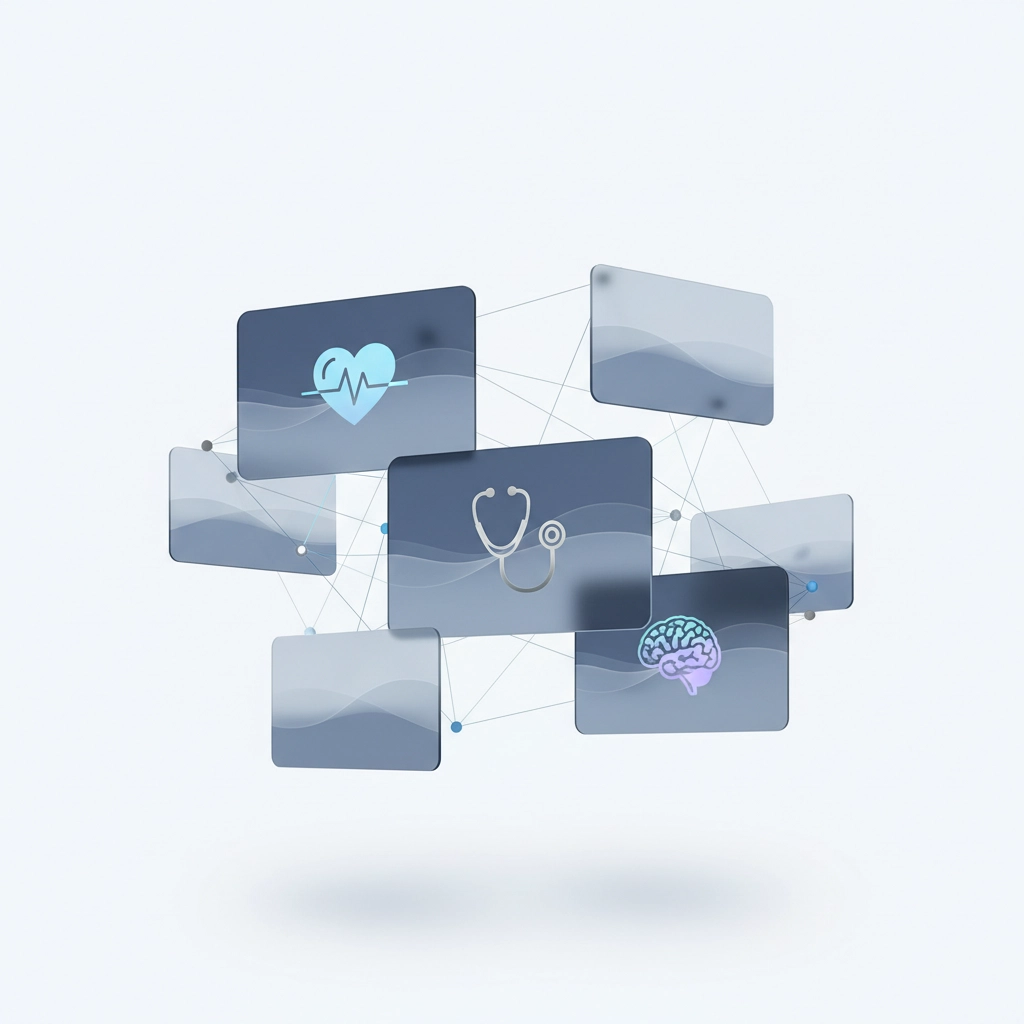Are You Making These 7 Common AI Medical Scribe Mistakes?

Hey there, fellow Canadian healthcare providers! 👩⚕️
We've been chatting with doctors, nurse practitioners, and clinic administrators across the country, and wow, the stories we're hearing about AI medical scribe software implementation are... well, let's just say there's room for improvement. While AI-powered medical scribes like Scribeberry can be absolute game-changers for reducing documentation burden, we're seeing some common mistakes that are preventing providers from getting the most out of their scribing software.
Don't worry though, we've got your back! Let's dive into the seven most frequent mistakes we're seeing and, more importantly, how to fix them so you can maximize your charting AI investment.
Mistake #1: Rushing Into AI Medical Transcription Without Proper Workflow Setup
Here's the thing, jumping straight into AI scribing software without planning your workflow is like trying to perform surgery with a butter knife. It might work, but it's not going to be pretty.
What we're seeing: Providers are installing AI medical scribe software and expecting it to magically integrate into their existing chaotic documentation processes. The result? Frustrated staff, confused workflows, and notes that still take forever to finalize.
The Scribeberry solution: Before you start dictating your first note, spend 30 minutes mapping out your ideal documentation workflow. When will you dictate? During the appointment or immediately after? How will you review and edit notes? Who's responsible for final approval?
Our most successful users create a simple workflow checklist that everyone in the clinic follows. Trust us, this small upfront investment saves hours later.

Mistake #2: Ignoring Privacy and Compliance Requirements
Oh boy, this one makes our compliance team break out in a cold sweat. We get it, privacy regulations can feel overwhelming, especially when you're already drowning in administrative tasks. But cutting corners on privacy compliance with AI-powered medical scribe software isn't just risky, it can be catastrophic.
What we're seeing: Providers using AI medical transcription without proper patient consent forms, inadequate data security measures, or unclear understanding of where their patient data is being processed and stored.
The Scribeberry solution: We've made compliance as painless as possible. All patient data stays in Canada, we're fully PIPEDA compliant, and we provide ready-to-use patient consent forms that you can implement immediately.
Take 15 minutes to review our privacy impact assessment, your future self will thank you.
Mistake #3: Using Generic Templates Instead of Specialty-Specific Ones
Using the same basic template for cardiology consultations and pediatric check-ups is like wearing flip-flops to a snowstorm, technically possible, but completely missing the point.
What we're seeing: Family doctors using the same generic template for everything from annual physicals to urgent care visits. Specialists trying to fit complex consultations into basic formats. The result? Notes that miss crucial specialty-specific elements and don't reflect the true complexity of the encounter.
The Scribeberry solution: We've built specialty-specific templates for over 30 medical specialties. Our cardiology templates automatically capture relevant cardiac history and examination findings. Our pediatric templates include growth parameters and developmental milestones. Our psychiatric templates focus on mental status examinations and treatment planning.
Don't just take our word for it, spend 10 minutes exploring the specialty templates relevant to your practice. The difference in note quality is immediately obvious.

Mistake #4: Not Optimizing Language and Accent Settings
Here's something we hear all the time: "The AI doesn't understand my accent!" Well, of course it doesn't: you haven't told it what to listen for yet.
What we're seeing: Providers with regional Canadian accents, non-English first languages, or specific pronunciation patterns struggling with transcription accuracy because they're using default language settings designed for generic North American English.
The Scribeberry solution: Our AI medical transcription system includes Canadian English optimization and can be fine-tuned for different accents and speaking patterns. We also support live translations for multilingual practices: perfect for Canada's diverse healthcare landscape.
Spend 5 minutes in your settings adjusting language preferences and testing different accent optimization options. Many of our users see transcription accuracy improve from 85% to 95%+ just by optimizing these settings.
Mistake #5: Poor EMR Integration Planning
Nothing kills the AI scribing software enthusiasm faster than having to copy-paste notes between five different systems. If you're doing more manual data entry with your AI medical scribe software than you were doing before, something's gone wrong.
What we're seeing: Providers choosing AI-powered medical scribe solutions that don't play nicely with their existing EMR systems, leading to duplicate work and workflow bottlenecks.
The Scribeberry solution: We integrate seamlessly with major Canadian EMR systems. Our integration isn't just about data transfer: it's about creating a smooth workflow where your AI-generated notes appear exactly where and when you need them.
Before committing to any medical transcription AI solution, ask for a demo with your specific EMR system. If they can't show you seamless integration, keep looking.

Mistake #6: Bad Voice Recording and Dictation Habits
Your AI scribing software is only as good as the audio you feed it. Speaking like you're ordering coffee at a drive-through isn't going to give you medical-grade documentation.
What we're seeing: Providers dictating while walking down noisy hallways, speaking too quickly, mumbling medical terminology, or trying to dictate complex cases without any structure.
The Scribeberry solution: Good dictation habits are learnable! Speak clearly and at a moderate pace. Use a consistent structure for each type of encounter. Spell out unusual medication names or dosages. If you're in a noisy environment, wait for a quieter moment or use noise-canceling features.
Our scribe works particularly well because the audio quality is typically much better than in-person encounters with background noise.
Pro tip: Practice dictating a few sample encounters before going live. It feels weird at first, but muscle memory develops quickly.
Mistake #7: Severely Under-Utilizing Automation Features
This one honestly makes us a little sad. We've built some incredible automation features into Scribeberry, but many users are only scratching the surface of what's possible with modern AI medical scribe software.
What we're seeing: Providers manually typing information that could be auto-populated, not using template automation, ignoring smart suggestions, and basically turning their AI-powered medical scribe into a really expensive transcription service.
The Scribeberry solution: Dive into the advanced features! Use our automated suggestions. Let the system auto-populate patient history from previous encounters. Take advantage of our clinical decision support features. Use batch processing for multiple notes.
Ready to Fix These Mistakes?
Look, we get it: implementing new technology in healthcare isn't exactly a walk in the park. But the good news is that most of these mistakes are easily fixable with a little planning and the right AI medical scribe software.
If you're currently struggling with any of these issues, or if you're just starting to explore charting AI options for your Canadian practice, we'd love to help. Scribeberry is designed specifically to address these common pitfalls, and we've built our entire system around the real-world needs of Canadian healthcare providers.
Want to see how Scribeberry can help you avoid these mistakes entirely? Sign up for a free trial and experience the difference that properly implemented AI scribing software can make in your practice.
Trust us, your future self (and your work-life balance) will thank you! 🚀
Questions about any of these mistakes or how to fix them? Our support team is standing by at help.scribeberry.com and we'd love to help you optimize your AI medical transcription workflow.



